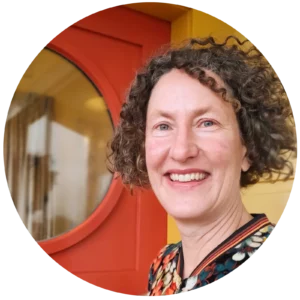“Forewarned, forearmed; to be prepared is half the victory.”
– Miguel de Cervantes
In matters of health, a little forewarning can be the difference between needing minor treatment versus major intervention, or the difference between a sudden, surprise death versus a well-managed end of life. Systematic monitoring, especially when health is declining, can provide the early clues required to make the right decisions and improve outcomes for everyone.
Currently, there are no national standards for monitoring the health of older adults living in residential aged care facilities. And yet, a high proportion of residents are frail. Frailty is a syndrome in which people are vulnerable to minor stressors and have decreased physiological reserves. When frail people get sick, symptoms present differently to those experienced by the general adult population. They can be very unwell but have “nonspecific” symptoms making it challenging to know how to help them.
Nurses in residential aged care facilities are trained to recognise acute illness in older people, but it can be hard to differentiate between underlying conditions and initiation of a new health issue. Making decisions about when to call for extra assistance is not easy, especially when changes can be subtle.
Nurse Practitioner Julie Daltrey wants people in residential aged care facilities to get the right care at the right time in the right place. That may sound simple. But she doesn’t want to turn the home-like environment of these facilities into a clinical setting by measuring resident’s vital signs every few hours. She argues, anyway, it’s the observable changes – things that don’t need medical equipment to measure – that provide the earliest indications that health may be going downhill.
Julie has spent much of her career solving problems. She worked as a gerontology nurse with the Waikato District Health Board, going into residential care facilities to help them sort out issues. One of the issues that stayed in her mind was the delay that sometimes happens in identifying and acting on deteriorating health in older people. She saw that this was partially a consequence of scattered pieces of information – a family member may have witnessed new confusion in the evening, a caregiver saw that breakfast wasn’t eaten, the nurse noted some unusual swelling – but there was no process to bring observations together and make them meaningful and useful.
When Julie started working with Nurse Practitioner and Associate Professor Michal Boyd (who she describes as a national treasure), they discussed ways of supporting nurses to address this problem and applied for funding from the Ageing Well National Science Challenge to investigate.
Scouring the international literature for published methods only revealed a large gap. There were no existing tools for registered nurses to systematically identify and respond to acute deterioration for residents in aged care facilities. So, for her PhD research, Julie set out to develop such a tool.
The result is DEWS – a Deterioration Early Warning System. There is no nationally implemented tool like this in the world, so Aotearoa New Zealand has an opportunity to become world-leading with this endeavour.
In practice, DEWS consists of three pieces of paper. One allows caregivers to record changes in observable signs such as residents being different from usual, eating less, falling more, or sleeping more. Another is for registered nurses to assess cognition, consciousness, behaviour, and physical and functional indicators of health. Measurement of vital signs also plays a part. DEWS scores dictate what level of intervention is required and how urgently that should be sought. There’s also a hand-over form to assist with decision-making and communication. The process aims to legitimise nurses’ assessments and empower them to escalate cases to the next clinical level.
But DEWS is much more than a form-filling exercise – it’s a thoroughly researched approach to monitoring deterioration. To determine which clinical indicators to use on the forms, the researchers analysed health records from 2015 and found over 500 people who had presented at an emergency department, been hospitalised, or died within seven days of their last official health assessment (using interRAI – Long-Term Care Facility). Statistical analysis helped them identify factors that were strongly correlated with acute deterioration. They found, for example, that being “largely asleep or unresponsive” made a person eight times more likely to be close to admission to ED, hospital, or death than residents without this symptom. The nine top-scoring indicators were included in the DEWS tool.
DEWS was designed to resonate with what carers and nurses already do. Interviews were conducted with residents, family members, care staff, nurses, and doctors to find out how acute deterioration is currently identified. The researchers found good overlap between what the data showed and what’s done in practice, so they were able to bring these together to iteratively design the tool.
Ultimately, this evidence-based approach ensures that deterioration in the health of older people is detected at the earliest possible stage. Early warning enables enhanced care in two main ways: timely treatment for those who have reversible conditions and are likely to recover, and good end-of-life care for those who are most likely dying. A little time can be so precious – it’s the difference between having palliative care in place so a person can die comfortably, in the appropriate place, with family gathered, instead of dying suddenly without support.
DEWS was co-designed and developed in the middle of the Covid-19 pandemic, so it wasn’t trialled with as many people as anticipated. However, the researchers are currently collaborating with Te Tahu Hauora Health Quality and Safety Commission to run a feasibility study of DEWS within residential aged care facilities. This will enable implications on the sector to be understood before wider implementation is actioned. Julie hopes to see DEWS translated into an electronic format and used nationwide.
For those living in residential aged care facilities, or with family members there, we can now look forward to a time when the fragmented pieces of an individual’s health puzzle will be collected systematically and used as clues to give the earliest possible notice of deterioration. We may not have a crystal ball when it comes to health outcomes, but, with a tool like DEWS, we’ll have the best chance of being prepared.
RESEARCHERS:
Julie Daltrey
Associate Professor Michal Boyd
Professor Vanessa Burholt
Associate Professor Jackie Robinson
Professor Heather McLeod
Dr Zhengaing Wu
Dr Katherine Bloomfield
Patumahoe Leaf-Wright
Kelly Te Tare

